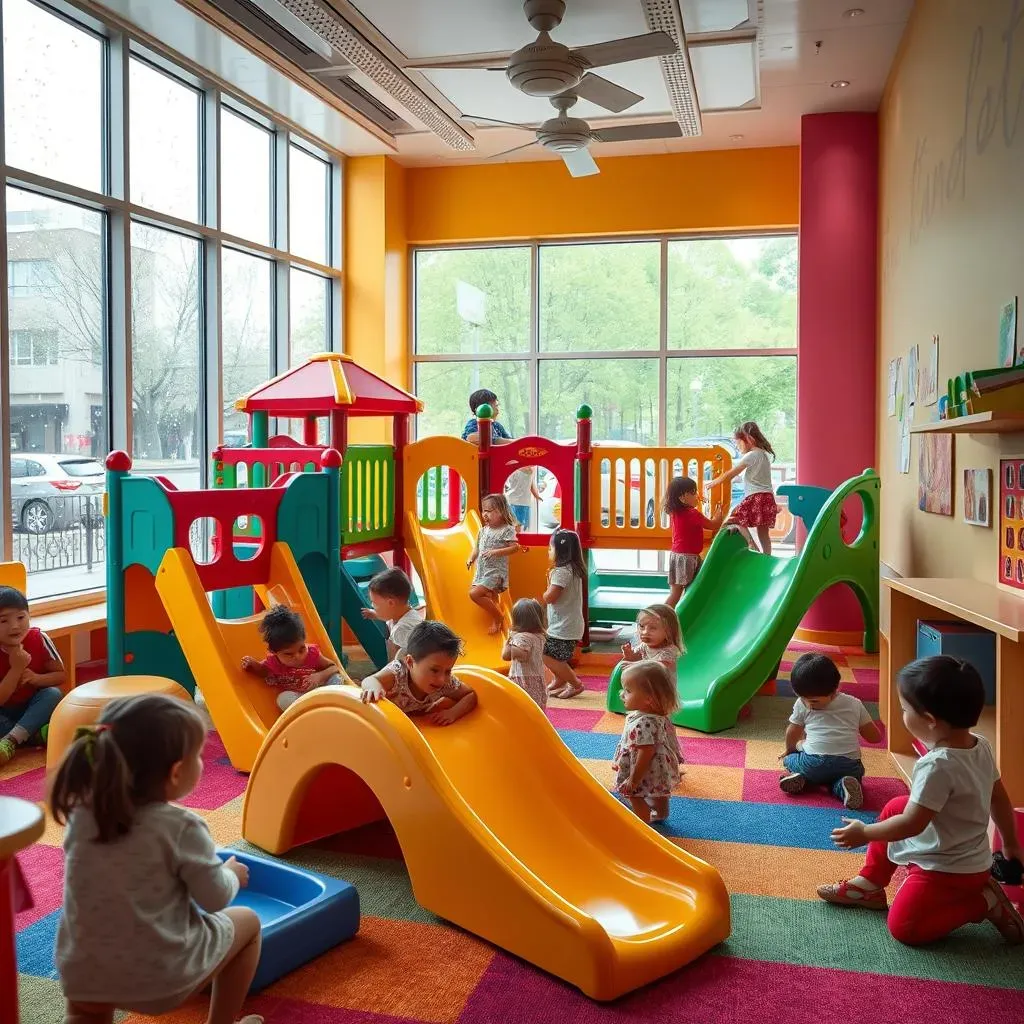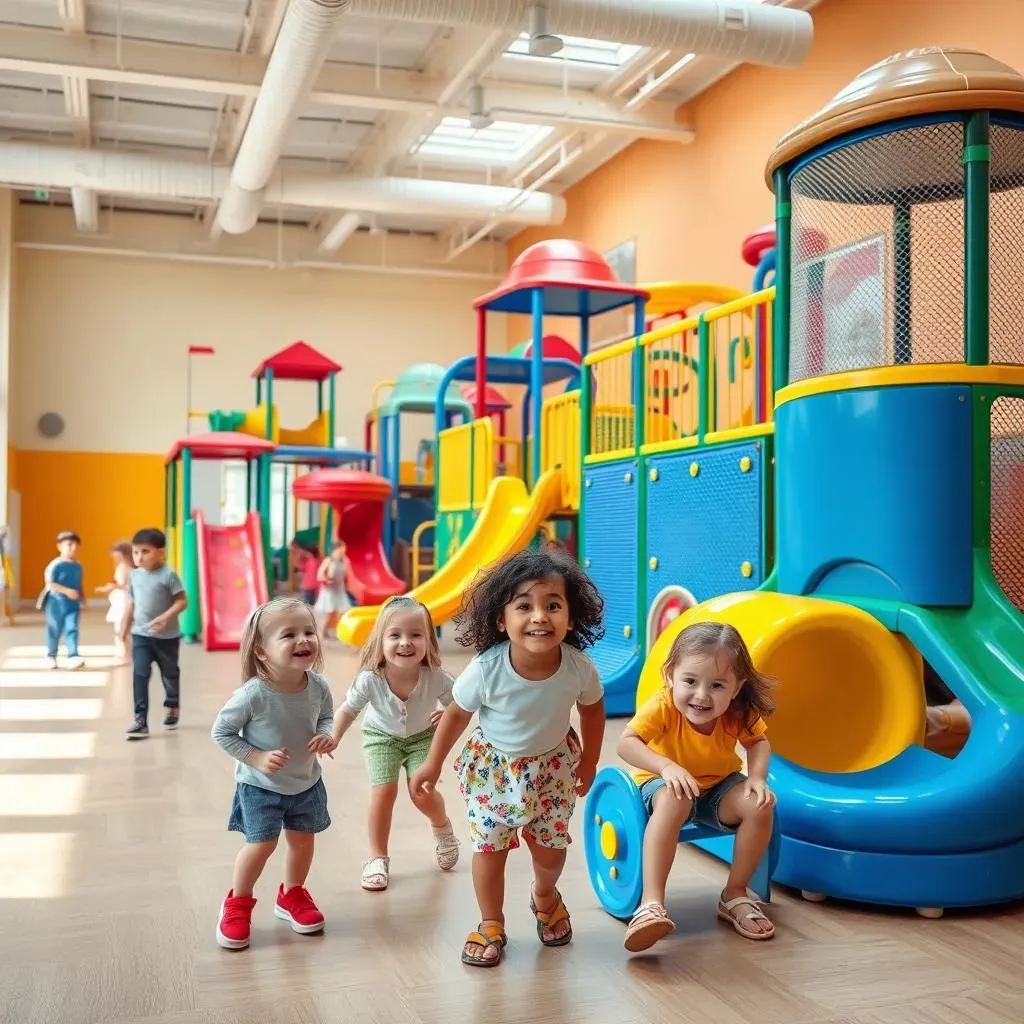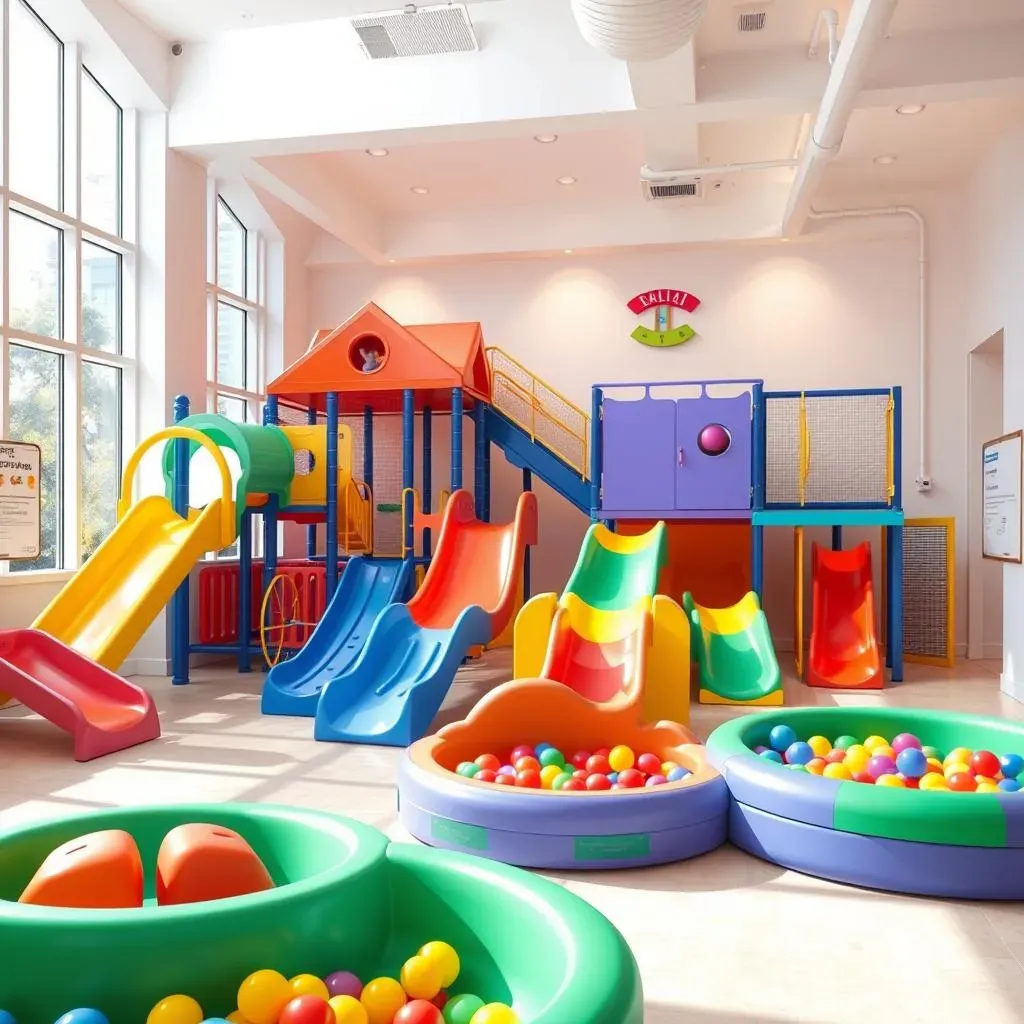Table of Contents
Running a daycare is no walk in the park. You're juggling nap times, snack times, and trying to keep a room full of toddlers from staging a coup over the toy bin. One thing that can make your life easier (and way more fun for the kids) is investing in quality daycare indoor playground equipment. Think about it: rain or shine, you've got a guaranteed zone of entertainment and exercise, right inside your facility. No more scrambling for last-minute activities when the weather throws a wrench in your outdoor plans.
Benefits of Indoor Playgrounds for Daycares

Benefits of Indoor Playgrounds for Daycares
Year-Round Play, Rain or Shine
Let's face it, unpredictable weather can be a daycare's worst enemy. One minute you're slathering sunscreen on the kids for outdoor playtime, and the next, you're scrambling to find indoor activities as a thunderstorm rolls in. Indoor playgrounds solve this problem by providing a climate-controlled environment for kids to run, jump, and explore regardless of what Mother Nature throws your way. No more canceled outdoor time, no more stir-crazy kids bouncing off the walls. It’s a win-win!
Think about the peace of mind knowing that you always have a reliable option for active play, no matter the season. It's not just about convenience; it's about consistency. Kids thrive on routine, and knowing they'll have a chance to burn off energy every day, rain or shine, can make a huge difference in their overall mood and behavior.
Boosting Physical and Cognitive Development
Indoor playgrounds aren't just about fun and games; they're also powerful tools for promoting physical and cognitive development. Climbing, crawling, sliding, and navigating obstacles all help children develop gross motor skills, coordination, and balance. These activities also stimulate their minds, encouraging problem-solving, spatial reasoning, and creativity.
A well-designed indoor playground can be a dynamic learning environment where kids can explore their physical limits, test their problem-solving skills, and interact with their peers in a positive and engaging way. It's a chance for them to learn through play, which is arguably the most effective way for young children to learn.
- Gross Motor Skills: Climbing, running, and jumping
- Fine Motor Skills: Grasping, manipulating objects
- Cognitive Development: Problem-solving, spatial awareness
- Social Skills: Cooperation, communication
Enhanced Social Interaction and Cooperation
Daycares are all about fostering social skills, and indoor playgrounds provide the perfect setting for kids to interact, cooperate, and learn from one another. Whether they're building a fort together, taking turns on the slide, or navigating an obstacle course as a team, indoor playgrounds encourage children to communicate, negotiate, and resolve conflicts in a safe and supportive environment.
Plus, let's be real, seeing a group of kids working together to conquer a climbing wall or navigate a tunnel system is just plain heartwarming. It's a reminder that play is not only essential for physical and cognitive development but also for building strong social bonds and fostering a sense of community.
Real-life example: I once saw a group of four-year-olds at a local daycare completely transform an indoor play structure into a pirate ship. They assigned roles (captain, first mate, lookout), created imaginary maps, and even negotiated "treasure" distribution. It was a masterclass in collaborative play!
Essential Daycare Indoor Playground Equipment

Essential Daycare Indoor Playground Equipment
Soft Play Structures: The Foundation of Fun
When you're kitting out a daycare indoor playground, soft play structures are your bread and butter. Think of them as the building blocks of a safe and engaging environment. These structures typically include padded climbers, tunnels, slides, and obstacle courses, all designed with soft, durable materials to minimize the risk of bumps and bruises. They’re perfect for toddlers and preschoolers who are still developing their coordination and spatial awareness.
Why are soft play structures so essential? For starters, they encourage active play in a safe and controlled setting. Kids can explore their physical abilities, develop their gross motor skills, and burn off energy without you having to worry about them getting seriously hurt. Plus, they come in a wide variety of shapes, sizes, and colors, so you can easily customize your playground to fit your space and budget.
Climbing and Crawling Elements: Building Strength and Coordination
Next up, let's talk about climbing and crawling elements. These are the features that challenge kids physically and mentally, encouraging them to develop their strength, coordination, and problem-solving skills. We're talking about things like small climbing walls, rope bridges, tunnels, and crawling tubes. These elements not only provide a fun physical challenge but also help children develop their spatial awareness and confidence.
When selecting climbing and crawling equipment, it's crucial to prioritize safety. Look for structures with secure handholds, non-slip surfaces, and adequate padding underneath. You should also consider the age and developmental level of the children who will be using the equipment. A climbing wall that's perfect for four-year-olds might be too challenging for two-year-olds, so it's important to choose elements that are appropriate for your specific age group.
Equipment Type | Benefits | Safety Considerations |
|---|---|---|
Padded Climbers | Develop gross motor skills, coordination | Soft padding, secure handholds |
Crawling Tunnels | Enhance spatial awareness, problem-solving | Proper ventilation, clear visibility |
Rope Bridges | Improve balance, build confidence | Sturdy construction, safety netting |
Designing a Safe and Engaging Indoor Playground

Designing a Safe and Engaging Indoor Playground
Prioritizing Safety First
Alright, let's get real about safety. When you're designing a safe and engaging indoor playground, safety isn't just a box to tick; it's the foundation upon which everything else is built. We're talking about creating an environment where kids can explore, experiment, and challenge themselves without risking serious injury. This means paying close attention to things like fall zones, padding, and equipment maintenance.
First off, think about fall heights. Any climbing structure or elevated platform needs to have adequate fall zones with impact-absorbing surfaces like rubber flooring or safety mats. Make sure these surfaces extend far enough to cushion a fall from the highest point of the equipment. Regular inspections are also key. Check for loose bolts, worn-out padding, and any other potential hazards that could cause accidents. Trust me, a little preventative maintenance goes a long way in preventing injuries and keeping your insurance premiums down.
Creating a Stimulating Environment
so safety is paramount, but let's not forget about the "engaging" part of designing a safe and engaging indoor playground! You want to create a space that sparks kids' imaginations, encourages exploration, and keeps them coming back for more. Think about incorporating a variety of textures, colors, and sensory experiences to stimulate their senses and promote cognitive development. Add some interactive elements like sound effects, light displays, or even projected images to create a truly immersive play environment.
Don't be afraid to get creative with your layout. Instead of just lining up equipment against the walls, try creating different zones or pathways that encourage kids to move around and explore. You could have a quiet area for reading and relaxing, a construction zone for building and creating, and an active play area for running, jumping, and climbing. The key is to provide a diverse range of activities that cater to different interests and developmental levels.
Choosing the Right Daycare Indoor Playground Equipment Supplier

Choosing the Right Daycare Indoor Playground Equipment Supplier
Reputation and Experience Matters
so you're ready to invest in some awesome daycare indoor playground equipment, but where do you even begin to find a reliable supplier? First things first, do your homework! Look for suppliers with a solid reputation and a proven track record in the industry. How long have they been in business? Do they have positive reviews and testimonials from other daycare providers? Don't be afraid to ask for references and check them out. A reputable supplier should be transparent about their experience and happy to provide you with the information you need to make an informed decision.
Experience is key. A supplier who's been around the block a few times will have a better understanding of the unique challenges and requirements of daycare environments. They'll know which materials are the most durable, which designs are the most engaging, and which safety standards are the most important. They'll also be able to offer valuable advice and guidance based on their years of experience. It's like hiring a seasoned contractor versus a newbie – you want someone who knows what they're doing!
Real-life example: A local daycare chose a supplier solely based on price, only to discover that the equipment was poorly constructed and didn't meet safety standards. They ended up having to replace the entire playground within a year, costing them way more in the long run. Lesson learned: don't skimp on quality and experience!
Safety Certifications and Compliance
Alright, let's talk about safety certifications and compliance. This is non-negotiable. When you're choosing a daycare indoor playground equipment supplier, you need to make sure they meet all the relevant safety standards and regulations. We're talking about things like ASTM (American Society for Testing and Materials) certifications, CPSC (Consumer Product Safety Commission) guidelines, and any local or state regulations that apply to daycare facilities.
Why are these certifications so important? Because they ensure that the equipment has been tested and meets specific safety requirements for things like structural integrity, impact absorption, and material toxicity. A certified supplier will be able to provide you with documentation proving that their equipment meets these standards. Don't just take their word for it – ask to see the certificates! And if they can't provide them, that's a major red flag.
Pro Tip: Check with your insurance provider to see if they have any specific requirements for playground equipment. Some insurers may require specific certifications or have preferred suppliers. It's always better to be safe than sorry!
Certification/Standard | Description | Importance |
|---|---|---|
ASTM F1487 | Standard Consumer Safety Performance Specification for Playground Equipment for Public Use | Ensures equipment meets safety requirements for public playgrounds |
CPSC Guidelines | Guidelines for playground safety | Provides recommendations for safe playground design and maintenance |
EN 1176 | European standard for playground equipment | Ensures equipment meets safety requirements in Europe |
Creating Joyful Spaces with Daycare Indoor Playground Equipment
Investing in daycare indoor playground equipment is more than just buying toys; it's about creating a safe, engaging, and developmentally enriching environment for children. By carefully considering the benefits, selecting the right equipment, prioritizing safety, and partnering with a reputable supplier, you can transform your daycare into a hub of active play and joyful learning. So, go ahead, unleash the potential of your indoor space and watch the little ones thrive!